We’ve all heard that dark leafy greens are good for us. Did you know that dark green leafy vegetables, calorie for calorie, are considered one of the most nutrient-dense foods available!
Watercress
Who knew that watercress was THE most nutrient dense green out there? Legend has it that Hippocrates built his first hospital near a watercress-producing stream to have easy access to it, so I guess he knew.
Watercress is loaded with vitamins A, C, E, and K, iron, calcium, B Vitamins and many phytonutrients like lutein and betacarotene. Current research suggests eating it may help lower triglycerides and boost our immune system. Research has also discovered a compound called phenylethyl isothiocyanate (PEITC) in watercress that has shown significant anticancer properties in studies.
Watercress is a small, crisp member of the mustard family that's slightly bitter with a peppery taste. It's delicious raw in salads, sandwiches, wraps or lightly sautéed.
What to Look For: Healthy, green leaves and a fresh, spicy scent.
Recipe: Watercress with Garlic and Scrambled Eggs (see below)
Collard Greens
Collards are a staple in many Southern dishes and add healthy nutrients to any meal. They are a rich source of Vitamins A, C, E and K, and a good source of B vitamins, choline, manganese, and plant based omega-3 fatty acids (in the form of alpha-linolenic acid, or ALA).
Studies show that collards have a significant cholesterol-lowering ability which is improved when they are steamed. In fact, steamed collard greens outshined kale, mustard greens, broccoli, Brussels sprouts and cabbage in terms of its ability to lower cholesterol!
The specific phytochemicals found in collard greens may help support our body’s natural detox process, provide anti-inflammatory benefits, and reduce our risk of cancer.
Collards can be eaten raw or cooked. A collard leaf can even be used as a wrap in place of a tortilla, since the leaves are relatively hearty and flat. Just trim the stem down the center of the leaf so that it’s the same thickness of the leaf. You can make the leaves extra pliable by steaming them for about 2-3 minutes as well; then just fill and roll up like you would a burrito. Collards are also great sautéed with a little garlic and olive oil or in soups and stews.
What to Look For: Deep-green leaves; avoid those that are limp or have yellow spots. The smaller the leaves, the more tender, and mild in flavor they will be.
Recipe: Smoky Collard Greens
Dandelion Greens
Many of us may think of dandelion greens as weeds, but in other parts of the world they are a very common item to see on the menu. Dandelion greens (and their roots) have been used medicinally for centuries. These tender spring greens are packed with nutrition and are a great source of Vitamins A, C, and K, calcium, iron, and potassium. They are also loaded with specific phytochemicals like zeaxanthin that has been shown to protect our eyes from UV rays and cryptoxanthin that’s been shown to help prevent cancer. Research also shows that dandelion might have anti-inflammatory effects and may support our immune system.
Dandelion greens are one of the bitter greens. The small, young leaves will be the least bitter. You can soften the taste by cooking them in a healthy fat and adding an acid like lemon juice or vinegar. Combining them with other milder greens like chard can help as well. Dandelion greens can be eaten raw in salads or steamed, sautéed or braised. My favorite is either mixed with other greens in a salad or the recipe below. Mustard and dandelion greens are an excellent combo!!
What to Look For: Firm, bright green leaves that look fresh. The smaller the leaf, the more tender and more mild the flavor.
Recipe: Dandelion Greens with Mustard Vinaigrette
Swiss Chard
Swiss chard is a relative of the beet family, tastes similar to spinach, and seems to be growing in popularity. It's loaded with vitamins A, C, and K, and also provides potassium, iron, calcium, magnesium, copper, and manganese. Specific phytochemicals, like kaempferol, found in chard have been shown to reduce cancer risk. Syringic acid, another phytochemical, has been found to help in blood sugar regulation.
When it comes to cooking, one easy rule of thumb is that if you can do it with spinach, you can do it with Swiss chard. Sautéed, steamed, braised, used in soups, omelets, it’s very versatile.
My favorite is just a simple sauté with garlic and olive oil. But the recipe below makes an amazing side dish!
What to Look For: Crisp, vibrant green leaves with no yellow or brown marks. Avoid leaves with small holes. The stalks should be firm, and can be red, pink, yellow or white depending on the variety.
Recipe: Sautéed Swiss Chard with Currants and Pine Nuts
Make sure you eat a variety of dark leafy greens so that you can take advantage of all the different nutrients and phytochemicals they each contain.
You also want to make sure you have a little healthy fat, like olive oil, with your greens. This will help your body absorb and utilize the fat soluble nutrients found in the greens.
Watercress with Garlic and Scrambled Eggs
Adapted From: Whole Living, July/August 2011
Makes 1 Serving
This is a great quick and easy, nutrient dense breakfast! Pair it with some fruit for a complete meal.
Ingredients
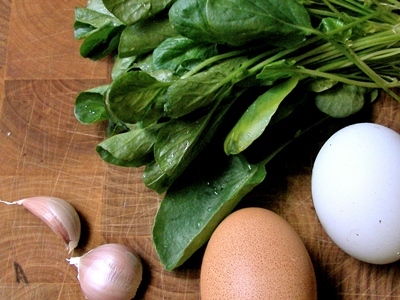
1 teaspoon extra-virgin olive oil
1-2 cloves garlic, minced
1 cup watercress, bigger stems removed
2 large eggs
Coarse salt and freshly ground black pepper
Directions
- Heat oil in a small skillet over medium heat. Add garlic and cook until fragrant, about 1 minute. Add watercress and cook, stirring, until just wilted. Remove from pan and set aside. Lower heat to medium-low.
- Whisk eggs and season with salt and pepper. Pour eggs into pan and cook, stirring, until just set. Return watercress to pan and stir. Serve immediately.
Click here for a printer-friendly version of this recipe.
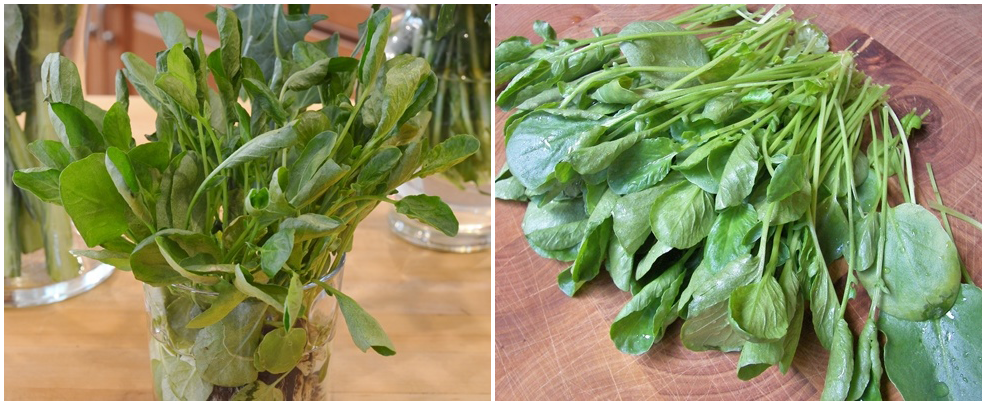
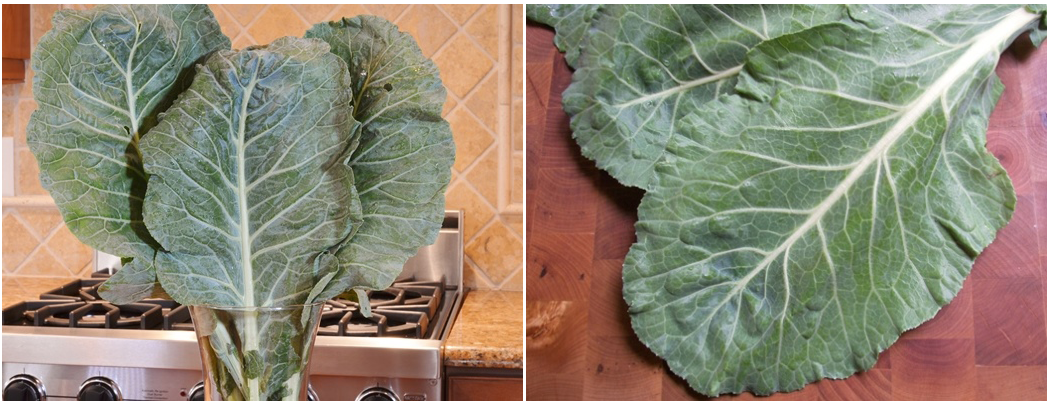
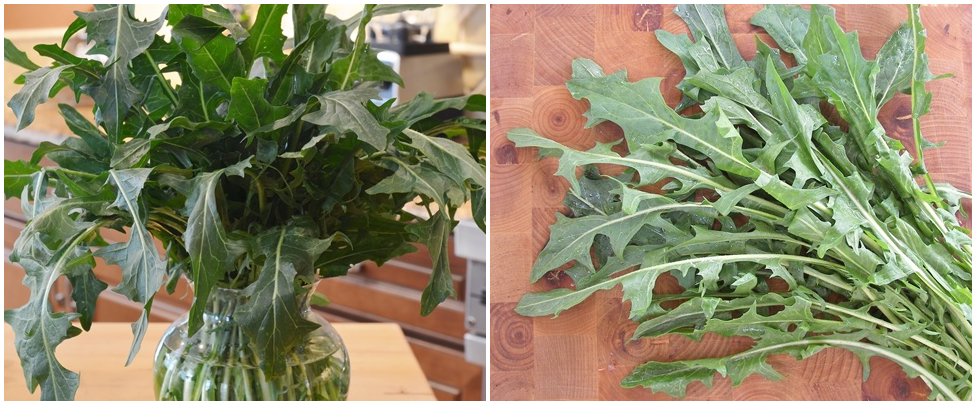
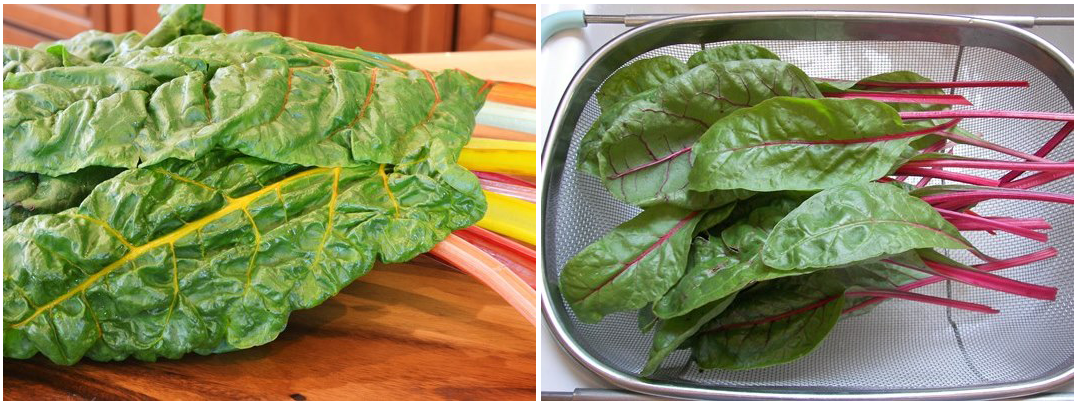
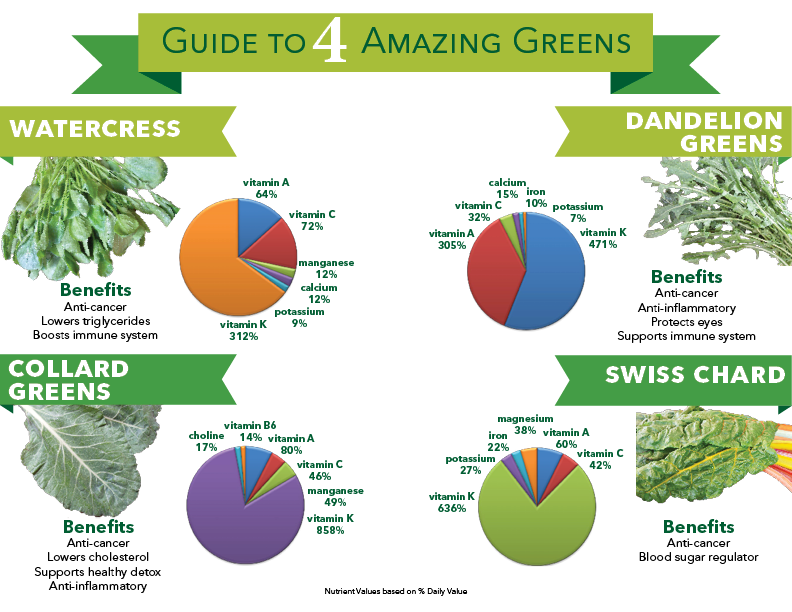
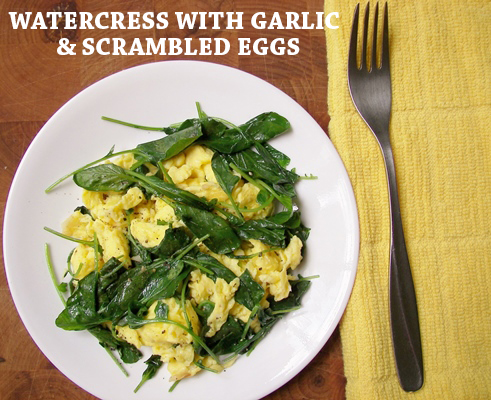
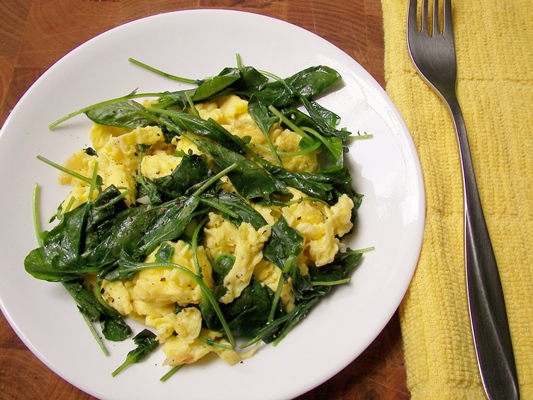


3 Comments
Thanks for the article! I always send my mom for buying the greens. I could never choose the right ones. This article is clear and helpful.
Good info! I like using fresh collard greens as a wrap. The green has a good bite that compliments a lot of foods
Yum, yes! And they tend to be big and pliable leaves, perfect for wrapping!